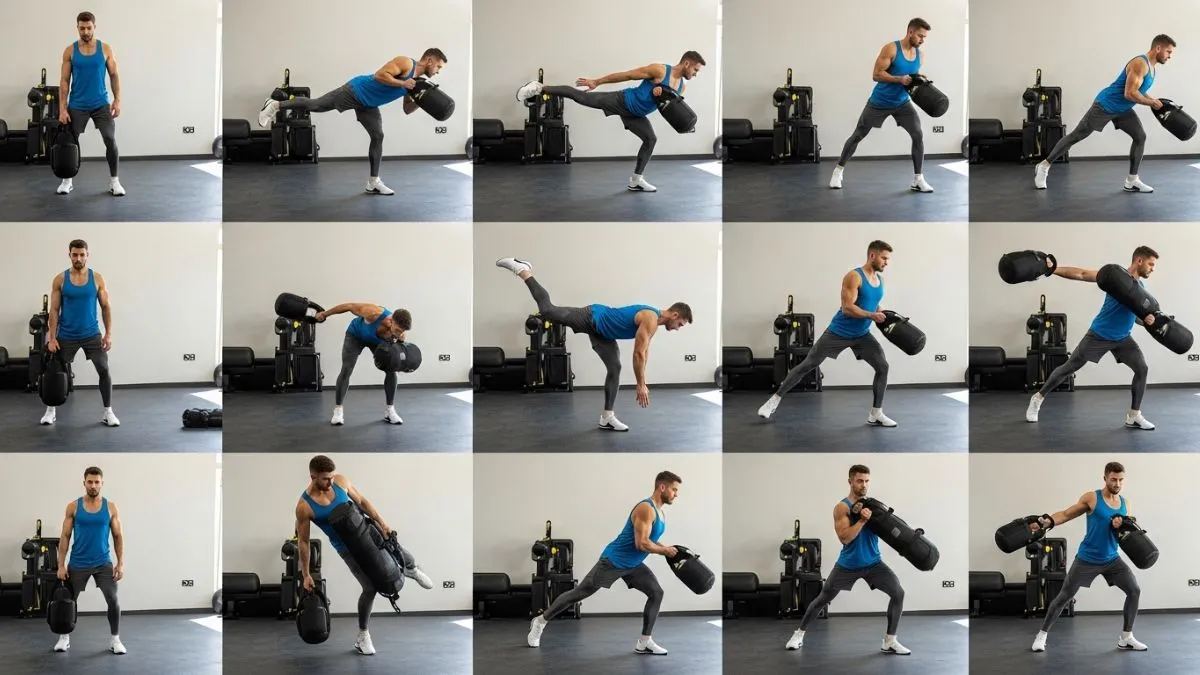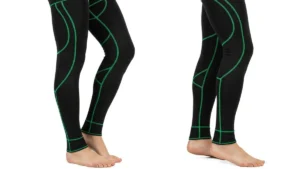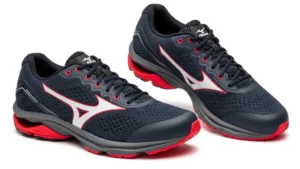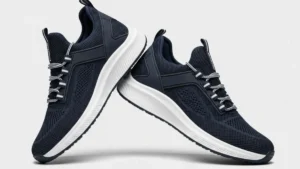
The fastest way to build explosive legs is by combining plyometric drills, sprints, and strength training into a focused weekly routine. You should train legs for speed 2 to 3 times a week, depending on your recovery. The best exercises for boosting leg power are jump squats, box jumps, and sprint intervals.
You’re here because you want real results. Not gym fluff. Not bodybuilding routines. Just straight-up, game-ready power for sports. In this guide, you’ll learn how to build explosive leg power that actually translates to performance—whether you’re on the field, court, or track.
We’ll cover how to train, when to train, and which movements get results. I’ll also point out where people mess it up. You’ll get clear examples, no padded advice. If you’ve got legs, this will make them faster, stronger, and sharper.
What Makes a Leg Explosive?
It’s More Than Just Strength
Explosive legs need fast-twitch muscle action, not just size or strength. You can squat heavy all day, but if you can’t leave the ground fast, you’re not explosive.
Strength gives you the raw ability to move weight. Explosiveness means moving that weight quickly. It’s the difference between dragging a sled and launching off a sprint block. That’s where power-based training beats slow, heavy reps.
Think of it this way: strength is the engine, but explosiveness is the turbocharger.
Power vs Speed vs Endurance
Power is the ability to produce force fast, speed is how quickly you move, and endurance is how long you keep going.
For sports like basketball, football, MMA, or sprinting, you need power. Speed builds on that power. Endurance helps you recover and repeat it. Don’t confuse running a marathon with being fast in short bursts. They’re not built the same. Power athletes train for sharp, short, and repeatable bursts. That’s where jump training and sprints shine.
Key Muscle Groups Involved
The main muscle groups behind explosive leg power are the glutes, quads, hamstrings, and calves.
- Glutes drive hip extension during jumps and sprints.
- Quads help push off the ground.
- Hamstrings control deceleration and reverse movement.
- Calves finish the movement with ankle pop.
Your core and hip flexors also play supporting roles. They stabilize and transfer power from your legs to your upper body. Ignore them, and your chain breaks.
How Often Should You Train for Explosiveness?
Training Frequency by Sport Type
Most athletes should train explosive legs 2 to 3 times per week, depending on their sport and recovery rate. Sprinters and fighters may train more often in shorter bursts, while footballers or basketball players may combine power and endurance in longer sessions.
Here’s what this means in practice:
- Sprinters need short, high-intensity sessions focused on max output. Think sprint drills, plyos, and power cleans.
- Basketball players might split sessions—speed one day, power another.
- MMA fighters often tie it into skill days, keeping things explosive but low on volume.
You’re not chasing soreness—you’re chasing speed and power that lasts.
Why Rest Days Matter for Power Gains
Power training breaks down fast-twitch muscle fibers and your nervous system—without rest, you’ll plateau or regress.
Think of power like a battery. You drain it fast, and if you don’t recharge it, performance crashes. Most people overtrain and get slower, not faster. Rest days aren’t lazy days—they’re growth days. Your legs rebuild, your coordination sharpens, and your jump height climbs. No rest? No progress.
Weekly Schedule Example
A balanced explosive leg week includes two focused sessions and one light activation or mobility day.
Here’s a simple, proven layout:
- Monday – Power Session (plyos + Olympic lifts)
- Wednesday – Light Activation (mobility + jump technique)
- Friday – Speed Session (sprints + resisted movement)
You keep volume low but intensity high. That’s the sweet spot for building speed without burning out. Stick to it for 6–8 weeks and watch your vertical pop and sprint times improve.
Warm-Up That Preps You for Power
Dynamic Movements to Fire Up Muscles
Dynamic warm-ups activate your nervous system, raise your core temperature, and get your muscles firing for explosive movements. Static stretches before training kill your pop—dynamic moves wake up the system.
Use things like:
- Leg swings (front/back and side-to-side)
- High knees
- Butt kicks
- A-skips
- Arm circles
You want to move like you mean it. Slow, lazy warm-ups = slow, lazy performance.
Mobility Drills That Protect Joints
Mobility drills improve joint range and reduce injury risk, especially in hips, knees, and ankles. If your joints can’t move well, your power gets choked off.
Use moves like:
- World’s greatest stretch
- Deep squat holds
- Lunge with rotation
- Ankle rocks over toes
- 90/90 hip rotations
These aren’t just feel-good stretches. They’re prehab for your power engine.
Warm-Up Routine Example (5–10 mins)
A strong warm-up for explosive legs should last 5 to 10 minutes and mix movement prep, mobility, and nervous system activation.
Here’s a sample:
- 30 sec – Jumping jacks
- 30 sec – High knees
- 10 reps each – Leg swings (forward/sideways)
- 5 reps – World’s greatest stretch
- 10 reps – A-skips
- 10 reps – Walking lunges with a twist
Top 7 Training Methods for Explosive Legs
The most effective methods for explosive legs are plyometrics, sprints, Olympic lifts, and variations of jump and tension-based work. These movements train fast-twitch fibers and improve jump height, acceleration, and power output. A mix of all seven methods gives well-rounded leg explosiveness for any sport.
These methods aren’t trends—they’re time-tested tools backed by performance data. You’ll learn why each one matters, how to apply it, and which muscles get the most out of it.
1. Plyometric Training
Plyometrics develop explosive force by training your muscles to contract quickly after a stretch.
This is your jump toolbox. Box jumps, depth jumps, and lateral bounds train your legs to fire off the ground fast. Focus on landing softly and minimizing ground contact.
Start with:
- 3 sets of 5 box jumps
- 3 sets of 3 depth jumps
- 2 sets of 8 lateral bounds
2. Sprint Intervals
Sprint training builds leg power, improves stride mechanics, and boosts explosive starts.
Stick with short bursts:
- 10 to 40-yard sprints
- Uphill sprints
- Resisted sprints (sleds or resistance bands)
These sharpen acceleration and raw takeoff speed. Rest 60–90 seconds between sets. You’re training speed, not stamina.
3. Olympic Lifts
Olympic lifts build whole-body power and explosive hip drive.
Use power cleans and snatches if your form’s solid. These moves teach your legs to work with your core and upper body in a snap movement. Start light. Work with a coach if possible.
Aim for:
- 4 sets of 3 power cleans
- 3 sets of 2 snatches (if trained)
If you’re new, substitute with trap bar jumps or dumbbell snatches.
4. Weighted Jumps
Weighted jumps build power through overload and vertical drive.
Use:
- Jump squats with dumbbells
- Bulgarian split squat jumps (bodyweight or light weight)
Start with low reps, like 3 sets of 4–6 jumps. Focus on form—don’t just throw your body upward with sloppy knees. These develop fast-twitch dominance and get your legs ready for sport-specific demands.
5. Eccentric Loading
Eccentric training focuses on the lowering phase to increase strength and tendon control.
Use slow, controlled moves:
- 4-count tempo squats
- Nordic curls with a slow drop
This improves your ability to absorb force, which is huge for jumping and landing. Great for building injury-resistant hamstrings too.
6. Resistance Band Work
Bands add tension and teach your legs to resist and redirect force.
Use band-resisted:
- Lunges
- Kicks
- Sprints (with anchor)
They’re great for joint-friendly power sessions or as finishers after heavy work. Bands teach speed under control, which translates to real-world movement.
7. Isometric Holds
Isometrics improve strength at specific joint angles and increase stability.
Try:
- Wall sits (30–60 seconds)
- Single-leg split squat holds
They don’t look flashy, but they build that “stick” strength—crucial for plant-and-push moves in sports. Hold. Shake. Repeat.
Weekly Explosive Leg Training Plan
A 3-day explosive leg plan balances power, speed, and strength without overloading your nervous system. This setup lets your legs recover between sessions while hitting all the angles needed for real-world athletic power. Stick with it for 6 to 8 weeks and track performance, not soreness.
3-Day Split Routine
Here’s a simple, effective 3-day plan that hits every piece of the power puzzle:
Day 1 – Power Focus
- Power cleans – 4 sets of 3
- Box jumps – 3 sets of 5
- Split squat jumps – 3 sets of 6 (each leg)
- Resistance band hip drives – 2 sets of 10
- Wall sits – 2 holds of 45 sec
You’re setting the tone. This day is all about quickness with control. Keep rest short (45–60 sec) and focus on clean movement.
Day 3 – Speed Focus
- 20-yard sprints – 5 sets
- Resisted sprints – 3 sets of 15 yards
- High knees – 3 rounds of 20 seconds
- Bounding (long strides) – 2 rounds of 30 yards
- A-skips – 2 rounds
This is your engine day. Every move is light, fast, and sharp. Focus on form, not fatigue. Rest fully between sprint sets.
Day 5 – Strength + Plyo Combo
- Trap bar deadlift – 4 sets of 5
- Tempo squats (3-sec lower) – 3 sets of 6
- Depth jumps – 3 sets of 3
- Nordic hamstring curls – 2 sets of 5
- Calf hops – 3 rounds of 20 seconds
Build force: Then teach your body to use it fast. Contrast training like this helps power translate from the gym to the game.
Recovery Tips to Keep Legs Fresh
The fastest way to keep legs fresh is combining post-workout mobility, proper fueling, and deep sleep. You don’t build power while training—you build it while recovering. Smart recovery helps muscles rebuild faster, reduces injury risk, and lets you train harder the next session.
Stretching and Mobility After Training
Post-training mobility clears tension, improves flexibility, and lowers injury risk.
Skip it, and your legs tighten up like a rusted spring. Spend 5–10 minutes after each session on:
- Deep lunges with reach
- Seated hamstring stretches
- Standing quad pulls
- Foam rolling (quads, hamstrings, calves)
Move slowly: Breathe into tight spots. You’re not trying to break a sweat—just restore range.
Nutrition Basics for Muscle Rebuild
Explosive training burns fuel—refueling right helps muscles repair and grow stronger. Right after your session,
aim for:
- Protein: 20–30g (chicken, eggs, shake)
- Carbs: 40–60g (fruit, rice, oats)
- Hydration: Water + electrolytes
Within an hour is best. You’re feeding the machine. No fuel = flat performance.
Sleep and Rest Guidelines for Athletes
Athletes need 8 to 10 hours of quality sleep for full leg recovery and peak power output.
Sleep resets your nervous system and helps muscles rebuild faster. Power gains slow if sleep drops below 7 hours.
Tips:
- No screens 30 mins before bed
- Keep your room dark and cold
- Stretch lightly before sleep for deeper rest
No supplements replace real sleep. Treat it like your secret weapon.
Common Mistakes That Kill Your Progress
The biggest mistakes are overtraining, skipping single-leg work, and ignoring your core. These limit power, slow recovery, and raise injury risk. Progress comes from doing the right work—not just more work. Fixing these habits keeps your legs stronger, faster, and more balanced in the long run.
Doing Too Much, Too Soon
Pushing too hard too fast overloads your joints, burns out your nervous system, and stalls gains.
Explosive training isn’t about grind—it’s about precision. Most people treat every session like a max-out contest. Bad idea. Stick to 2–3 focused sessions per week. Build volume slowly. If you’re sore for days or feeling sluggish, scale back. Recovery equals progress.
Ignoring Unilateral Movements
Skipping single-leg work creates imbalances that mess with speed, power, and joint health.
Most sports movements happen one leg at a time—think sprinting, cutting, jumping off one foot. If your training is all squats and deadlifts, you’re missing half the picture.
Add:
- Bulgarian split squats
- Single-leg box jumps
- Step-ups
- Single-leg RDLs
Train each leg to hold its own.
Forgetting About Core Stability
Without core control, your leg power leaks at the hips and spine—slowing you down. You don’t need crunches.
You need stability:
- Dead bugs
- Planks
- Bird dogs
- Hanging leg raises
Core work keeps your power connected from the ground up. Train it like you train your legs—with purpose and consistency.
Equipment That Helps Build Explosive Legs
The right tools supercharge your explosive training. Resistance bands, plyo boxes, weight vests, and sleds add targeted overload, variety, and intensity. These tools challenge your legs in sport-specific ways and help break through plateaus—especially for speed, height, and power output.
Resistance Bands
Resistance bands increase power by adding variable tension throughout your movement.
They’re lightweight but brutal—especially in band-resisted lunges, squat jumps, and lateral drills. Bands challenge your control at the top of every rep, where speed matters most in sports. Great for agility work too.
Plyo Boxes
Plyo boxes allow safe, controlled jumps that train height, speed, and landing mechanics.
Box jumps, depth drops, and lateral hops improve fast-twitch muscle firing and force absorption. They also reduce ground impact compared to jumping on hard surfaces. Use adjustable heights to scale difficulty and track progress.
Safety tip: land softly and step down—don’t jump off.
Weight Vests
Weight vests increase intensity without changing the movement pattern.
Add them to bodyweight jumps, step-ups, or hill sprints. The extra load boosts force production and coordination under fatigue. Start light (5–10% of bodyweight) and keep form perfect—bad technique under load ruins joints.
Use them sparingly to avoid overtraining.
Sleds and Speed Chutes
Sled pushes and parachute sprints develop raw power, acceleration, and drive.
Pushing a sled works quads, glutes, and hamstrings under resistance—like sprinting with a load. Speed chutes add drag without disrupting form, building sprint mechanics and max velocity. Great for athletes in football, rugby, soccer, and track.
For best results, vary load: light for speed, heavy for strength.
Who Should Use These Routines?
Anyone seeking explosive leg power—whether for sport or life—can benefit. These routines are tailored to sprinters, field athletes, fighters, and everyday gym-goers aiming for athleticism, not just size. Power translates into speed, agility, and control—key for peak performance in any arena.
Sprinters and Track Athletes
Explosive leg training is non-negotiable for top-end speed and acceleration.
Movements like sprint intervals, sled pushes, and plyometrics mirror sprint demands. Olympic lifts and resisted sprints develop horizontal power crucial for fast starts and strong finishes. These routines bridge the gap between weight room strength and on-track performance.
Football and Basketball Players
Field and court athletes thrive on first-step quickness, vertical hops, and rapid direction changes.
Plyo boxes, resistance bands, and isometric holds help build powerful hips and stable knees. Add explosive lifts and core-focused movements to withstand contact and execute dynamic plays. These workouts support high-performance agility and injury prevention.
Martial Artists and Fighters
Leg explosiveness enhances takedowns, kicks, and overall strike efficiency.
Weighted jumps and band-resisted movements build explosive torque, while isometric holds and Nordic curls improve control under tension. Strong, reactive legs give fighters an edge in balance, transitions, and explosive counters. Conditioning benefits carry over to stamina.
Everyday Lifters Wanting Athletic Legs
Not just for athletes—these routines build legs that look good and move well.
You’ll develop fast-twitch muscle fibers, burn fat with high-intensity intervals, and feel lighter on your feet. Instead of just squatting heavy, you’ll train with purpose: to move faster, jump higher, and dominate life outside the gym.
Final Thoughts on Building Explosive Legs
Building explosive legs isn’t about grinding endlessly—it’s about training smart. Consistency, proper technique, and structured recovery are what truly unlock power, not just lifting heavier. Dial in the right methods, give your body time to adapt, and results will follow.







